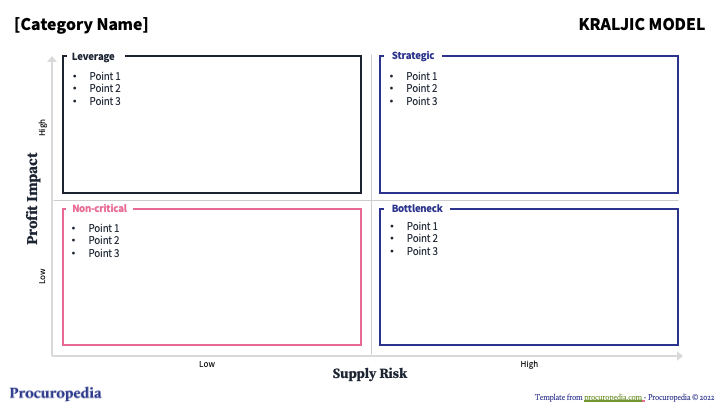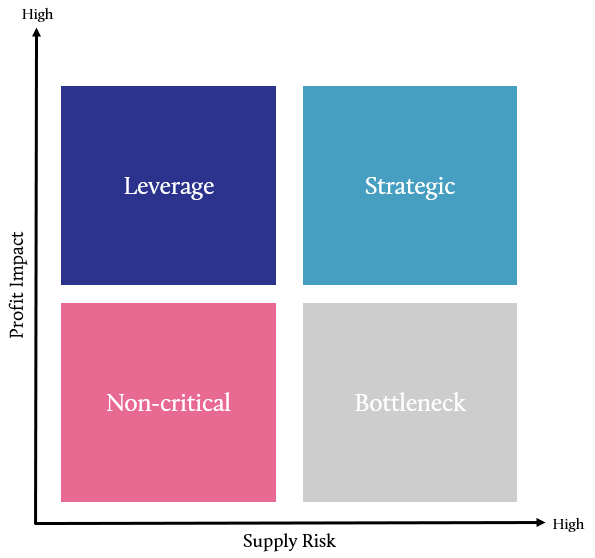Leverage Items
Leverage items have high profitability but low supply risk factor. In these scenarios, the buyers own the balance of power. They can use this power to gain better pricing for increased profit margin.
These scenarios are found where products and services have widespread availability and are highly commodified. Procurement professionals can easily find replacements for suppliers since what they offer is much the same.
Because of the profitable impact of the products and services from the suppliers it is desirable to have procurement manage these products more actively to ensure increased margin opportunities are maximized.
Non-Critical Items
Non-critical items are those that pose a low supply risk and have a low impact on organizational profitability. While such items may be valuable to employees in carrying out their duties but their absence would not significantly impact the business.
Many procurement functions view non-critical items as a nuisance. Because of this, procurement would aim to use reverse auctioning as the main sourcing tool to reduce the resource, time and administrative burden on the function whilst increasing operational efficiency.
In these cases, expect procurement to use product catalogs that link internal customer orders directly to the suppliers to deliver directly to the internal customer.
Strategic Items
These items pose high supply risk but offer high-profit impact. These items are normally critical to the organization. These items normally represent no more than a handful of categories and suppliers. Because of their importance, securing a predictable and successful supplier-buyer relationship is crucial. It is common that these items only have one or few sources of supply.
Due to their importance, more complex sourcing techniques are used to ensure the right product or service is delivered to the organization on the terms they require. It is common for each contract to be agreed directly through negotiation with the supplier. Procurement will aim to create more partnership type relationships with these suppliers and promote collaborative working practices.
Bottleneck Items
These items pose a serious risk but with low profitability. In this scenario, the balance of power is normally balanced between the buyer and supplier. In most cases these are items that have only one or few sources of supply. Buyers should be wholly focused on reducing the supply risk as much as possible to minimize operational impact, rather than trying to reduce prices at all costs.
Procurement professionals must remember that this quadrant can present a few viable opportunities. More creative buyers might be looking to modify the terms of trade or, innovative internal activities can amend product requirements, replacing one material with another to access a more favorable buying market.


